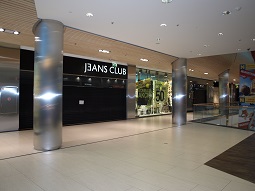Moral of Jeans Club failure: Vendors should keep eye on clients

Failure to properly prepare for the risks of currency fluctuation and neglecting the necessary hedges can bring down even otherwise successful companies. The Credit Management Group (CMG) presents the potential pitfalls and early warning signs through a case study of Jeans Club, which went to bankruptcy from major success over the course of just a few years, causing serious headaches for its suppliers.
The company was founded in 1997 by four Hungarian private individuals under the name P. and P. JEANS Kft. It adopted the Jeans Club name in 2003. Based on reports, the firm operated 35 stores in Hungary and 18 abroad. Its most active foreign markets were the Czech Republic and Poland with six and seven stores, respectively. P. JEANS employed over 1,500 people at peak.
The turning points in the company’s life came in 2008, having operated for more than a decade at that point and for five years under the Jeans Club brand. In that year, the firm realized losses amounting to HUF 2.4 billion in exchange rate losses and was never truly able to recover, CMG’s Ákos Schmidt said. This led to a realized balance sheet loss of HUF 1.9 billion that year alone and only compounded the fact that the year saw a rampant economic crisis, a reeling clothing retail industry and low capital levels that launched a debt spiral which eventually led to the company’s group’s liquidation and the shutdown of its stores in Hungary and the region.
As a result of the significant losses, the percentage of registered capital dropped from a healthy 30% to 8.48%, meaning that everyday operations called for external finances. This was mainly managed through short-maturity loans of nearly HUF 4 billion as well as HUF 1.4 billion in long-term loans.
Schmidt notes that in the critical year of 2008, Jeans Club had due payables amounting to HUF 7.1 billion, nearly as much as its annual revenues of HUF 8.2 billion. Of the total, HUF 5.3 billion was due within the year whereas the company only had collectibles of a little less than HUF 2 billion. The company also accumulated costs by directly financing several of its foreign subsidiaries.
Being strapped for cash meant that it typically paid its vendors on a 63-day deadline and could only recoup the costs of its stock over 128 days. This compares to payments to vendors after 42 days and recouping over 116 days in 2007. Schmidt stressed that these timeframes indicate very poor efficiency.
From bad to worse
By the end of 2008, the financing bank filed mortgage rights for the company and the circumstances that sparked the downward spiral only got worse as 2009 progressed. The company managed to increase turnover by 19%, but profitability was unchanged from a year before, which, compounded by growing interest costs, led to a minute profit of HUF 16 million for 2009.
Efficiency of sales also worsened, stock rotation increased to 148 days and rose in value to HUF 4 billion from HUF 2.9 billion. Schmidt says that the figures indicate serious overstocking. In financial terms, payment deadline to vendors rose to 108 days, while liquidity reached critical levels.
This led in early 2011 to a change in management who could only oversee, as during the course of the year, the company declared bankruptcy, had its assets confiscated and eventually underwent full liquidation. After winding up its foreign subsidiaries, the company’s finances reached a state that it was added to the tax authority’s black list of debtors with arrears overdue by 180 days or more by the end of that year.
“Smart people learn at the expense of others,” goes the saying. The point of case studies about insolvent companies is to present an autopsy and identify the early warning signs that could allow vendors to determine if something is very wrong. The moral here is clear: The hints of Jeans Club’s demise were telegraphed in advance of its downfall, and suppliers who were keeping eyes on the chain could avoid losses before the bitter end came.
SUPPORT THE BUDAPEST BUSINESS JOURNAL
Producing journalism that is worthy of the name is a costly business. For 27 years, the publishers, editors and reporters of the Budapest Business Journal have striven to bring you business news that works, information that you can trust, that is factual, accurate and presented without fear or favor.
Newspaper organizations across the globe have struggled to find a business model that allows them to continue to excel, without compromising their ability to perform. Most recently, some have experimented with the idea of involving their most important stakeholders, their readers.
We would like to offer that same opportunity to our readers. We would like to invite you to help us deliver the quality business journalism you require. Hit our Support the BBJ button and you can choose the how much and how often you send us your contributions.









